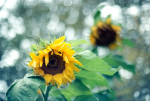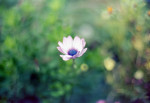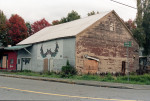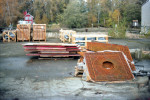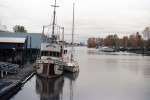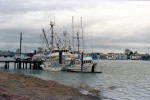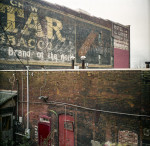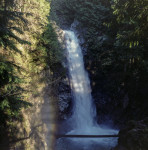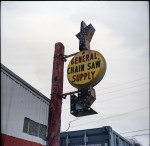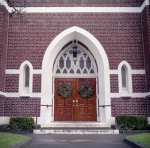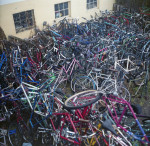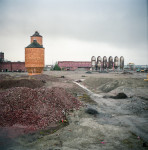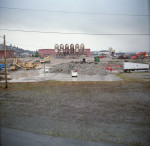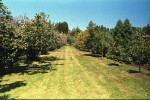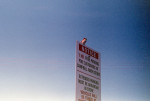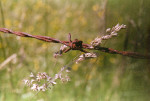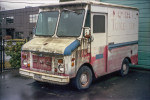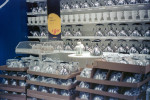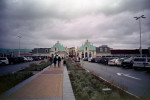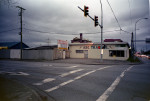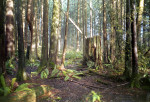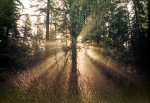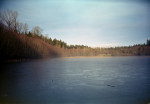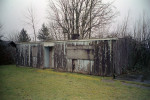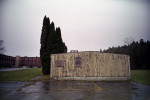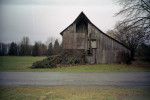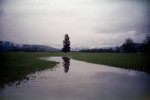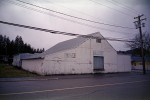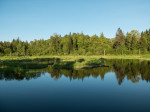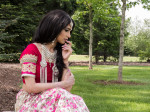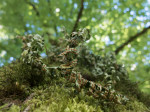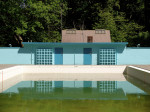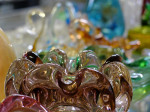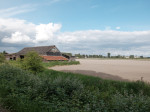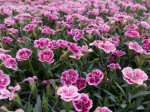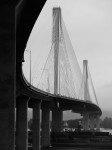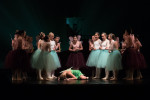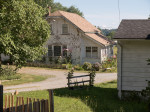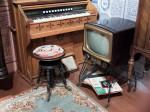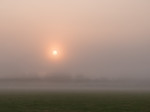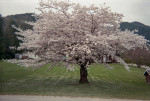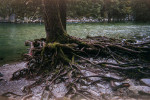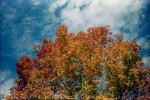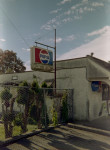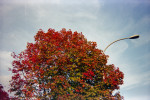Nov
18
2017
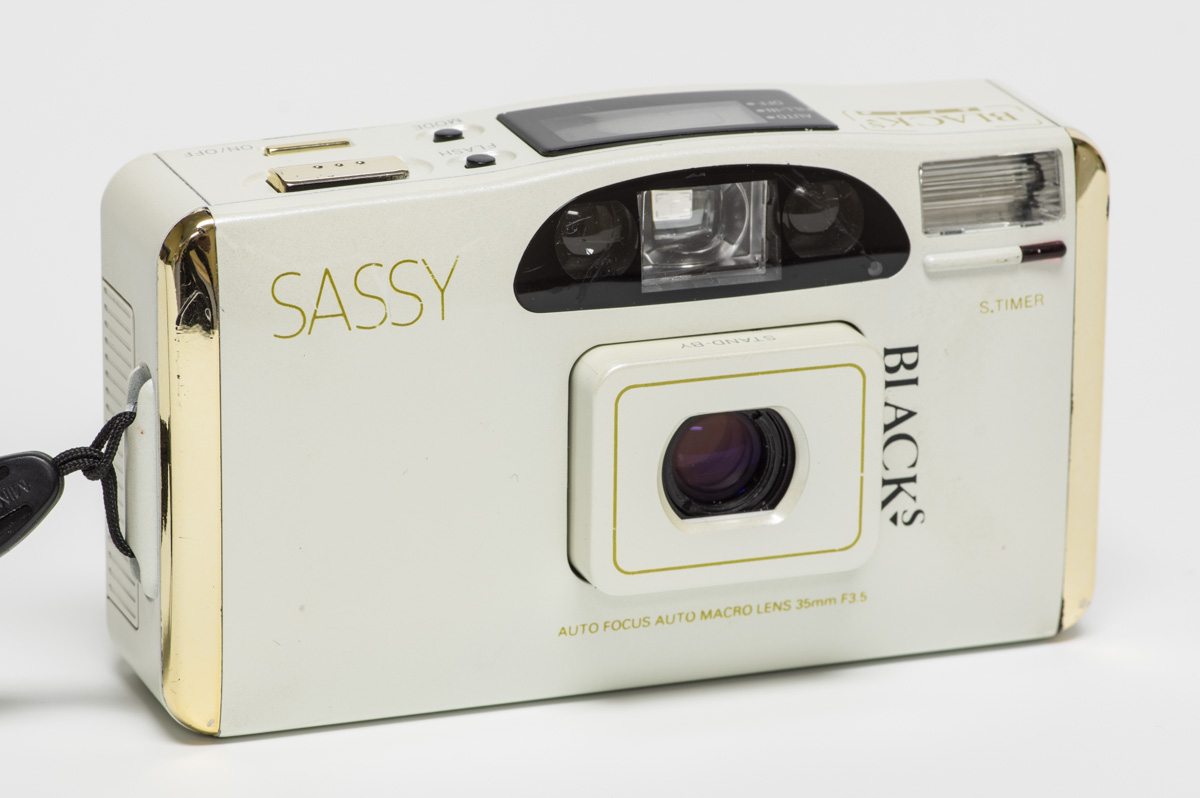
Back when there were camera stores seemingly everywhere there was a chain of stores in Canada called Blacks which was taken from the family name of the founders. In any case they were a large enough retailer to have cameras rebranded with their name from a variety of manufacturers. In this case I think this is another one of the variations of a Matsushita that came as the Leica mini, The Minolta Freedom Escort, Olympus Trip AF and possibly others. So despite having the same internals as its siblings the Sassy went all out for style. And by style I mean what passed for style in 1992.
When all is said and done though the camera has a 35mm f3.5 lens and the usual flash control features and works despite looking like it never lifts a finger with that gold trim. I loaded it up with some terribly out of date Konica 400 film which leaves me with a good excuse to try the camera again, if only I can find an early 1990’s themed costume party.
2 comments | posted in Cameras, Uncategorized
Nov
4
2017
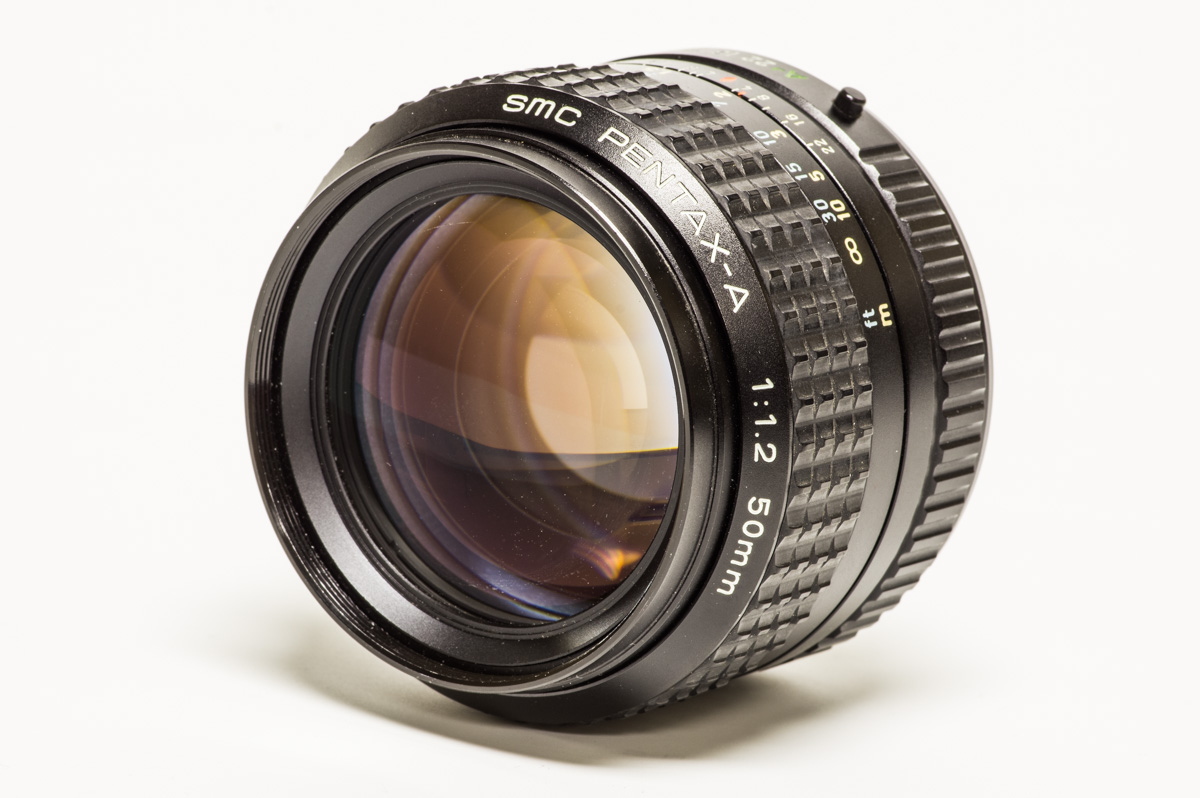
I wish that I had a full frame digital camera to test this lens with but film and APS-c sized digital will have to suffice. The first thing you notice about this lens is the weight it is a lot of glass and its needed to achieve that fast f1.2 aperture. As this is an older lens I didn’t have too high of expectations especially because my newer DFA 50 1.4 is quite soft wide open but to my surprise the SMC 50 1.2 was actually quite sharp, that is for what is in focus inside the razor thin depth of field provided at f1.2. It also has very little vignetting and what there is is gone by f2.8. Having a lens this fast is as they say, to a kid with a hammer everything is a nail. However nailing focus wide open is not so easy even the slightest swaying of the photographer is enough to throw it off. If you do get it right though it is a very unique look. What follows are some film shots taken with my Pentax MZ-6 and the this lens on Kodak Ektar 100. Back in the early 1980’s this lens cost around twice as much as a 50mm f1.4 and it still garners a similar premium on the second hand market.
On my Pentax K-3 DSLR the SMC Pentax-A 50mm f1.2 provides an angle of view more like a 75mm lens would on the film SLR making direct comparison difficult but also making it perhaps even better suited to portraiture.
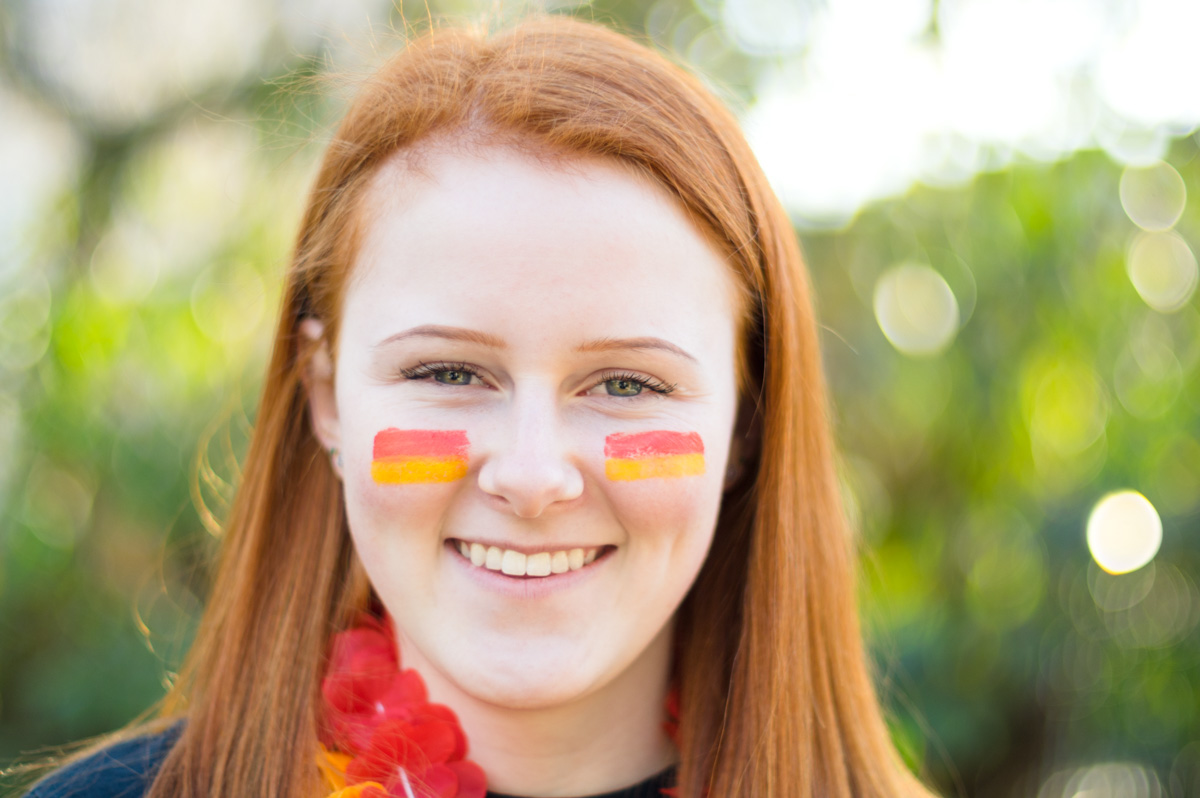
And some digital pictures taken with my Pentax K-3 and this lens.
no comments | posted in Cameras, Photography, Uncategorized
Oct
21
2017


One of the things I really like about old medium format folding cameras is how compact they are when closed. The Zeiss Ikonta 521/16 is a great example taking up very little room in a camera bag although adding a hefty 565 grams They were produced over many years and had different lenses and features. This one has a 75mm f3.5 Novar Anastigmat lens and a shutter with 8 speeds up to 1/300 second. It also has double exposure prevention with a nice little red dot indicator when the film has been advanced. Using one of these cameras for ultimate image quality isn’t a great idea but using them for the unique experience and look is. There is a certain pleasure from using a camera that despite being over 70 years old still does its job.
no comments | posted in Cameras, Photography, Uncategorized
Sep
16
2017
 Looking back at the 1990’s at some point in a camera advertisers career it must have become difficult to come up with new ways to describe the same features in an exciting way. How else can you explain this line about the PZ500 “…and a tripod socket, permitting the camera to be mounted anywhere on a tripod to take advantage of the self-timer and of the non flash exposure option” I feel that advertisers pain as I struggle to write about what sometimes amounts to the same camera in new packaging. But here we go. The Vivitar PZ500 sports a 35-70mm zoom lens that they suggest is a ‘Series 1 Optic’. Funny how they never had any other Series that they were proud of. The aperture goes from f4 at 35mm to f7.6 at 70mm. The zoom control is a clear rocker switch on the top that has the indicator LCD beneath.
Looking back at the 1990’s at some point in a camera advertisers career it must have become difficult to come up with new ways to describe the same features in an exciting way. How else can you explain this line about the PZ500 “…and a tripod socket, permitting the camera to be mounted anywhere on a tripod to take advantage of the self-timer and of the non flash exposure option” I feel that advertisers pain as I struggle to write about what sometimes amounts to the same camera in new packaging. But here we go. The Vivitar PZ500 sports a 35-70mm zoom lens that they suggest is a ‘Series 1 Optic’. Funny how they never had any other Series that they were proud of. The aperture goes from f4 at 35mm to f7.6 at 70mm. The zoom control is a clear rocker switch on the top that has the indicator LCD beneath.  Now at least that is unique. The focus system is 35 zones which seems like plenty all things considered having hundreds of possible distance settings as some point and shoots have may just be more marketing hype. All kidding aside the lens is actually pretty good and the only shot that seems slightly out of focus is one where I took a picture through a chain link fence. I think the choice of a very conservative 2X zoom starting at 35mm allows for even lighting (no vignetting) and low optical aberrations. I added the tape to the battery door more as insurance than out of absolute necessity. One thing about one camera: The Vivitar PZ500 is essentially the same camera as the Leica mini zoom both being manufactured by Matsushita and having the same specifications except for the Leica name.
Now at least that is unique. The focus system is 35 zones which seems like plenty all things considered having hundreds of possible distance settings as some point and shoots have may just be more marketing hype. All kidding aside the lens is actually pretty good and the only shot that seems slightly out of focus is one where I took a picture through a chain link fence. I think the choice of a very conservative 2X zoom starting at 35mm allows for even lighting (no vignetting) and low optical aberrations. I added the tape to the battery door more as insurance than out of absolute necessity. One thing about one camera: The Vivitar PZ500 is essentially the same camera as the Leica mini zoom both being manufactured by Matsushita and having the same specifications except for the Leica name.
no comments | posted in Cameras, Photography, Uncategorized
Aug
12
2017

The Kodak T550 is a diminutive camera that separated itself from the rest of the APS pack with a flash that flipped up from its other duty as a lens cover. The 28mm f3.5 lens gives an angle of view similar to a 35mm lens on a 35mm film camera when you use the entire film area of 30.2mmx16.7mm. With each APS exposure the full image area is recorded and with that also recorded magnetically the aspect ratio setting the user had selected. There were three settings known as H (high definition), C (Classic) and P (Panoramic) so while the entire image area was always recorded, during printing the machine would read the magnetic info and crop the images accordingly. I prefer to use the full 16:9 aspect ratio for composing images as it is the one interesting thing about APS film. And it shouldn’t be a surprise but I used out of date non refrigerated film with an unknown history as that is my primary source of APS film.
no comments | posted in Cameras, Photography, Uncategorized
Apr
9
2017

What can one say about such a utilitarian camera, other than it just works. It’s that just working that made it so popular as a photography teaching tool. Additionally it’s completely mechanical controls mean that it can be used without batteries and it’s rugged metal build make it a survivor. My first encounter with the K1000 was to take pictures of a CRT screen from a pipe inspection system. At the time ( I used a Minolta X700 personally) it seemed ridiculously simple but it always worked.
In fact I don’t recall coming across any that haven’t worked in some manner no matter how beat up they looked. That being said they can develop shutter issues as with this unit. It seems like the shutter at 1/1000 is in need of some adjustment as it left one side of some images slightly darkened. There is plenty of information on the web about the history and use of this camera so I won’t rehash what’s already there but I will say that with all the developments in the arena of digital photography one thing that is missing in my opinion are cameras that embody the nature of the K1000. There are cameras that take styling cues from the past but not many of them strip down the photography experience to just dialing in settings and taking pictures.
1 comment | posted in Cameras, Photography, Uncategorized
Mar
25
2017

The super A is a heavy camera at 810 grams and that is without the lightmeter on top which weighs an additional 135 grams. The shutter ranges from 1 to 1/400 sec however the 1/400 second setting is nearly hidden on the dial and is not available when using the light meter. It does have interchangeable lenses, I only have the one 50mm f2 which is a reasonable performer even wide open. The other lenses are quite rare. The 50mm f2.0 provides a smooth out of focus area often referred to as bokeh just outside of the area of focus but distant out of focus areas are quite nervous looking. This look is distinct from what you get from modern lenses. Its effect can be seen best in the image of the railroad.

The apertures are set at definitive click stops and at f5.6 and f8 produce an interesting aperture shape that looks like a 10 pointed star.

no comments | posted in Cameras, Photography, Uncategorized
Mar
10
2017
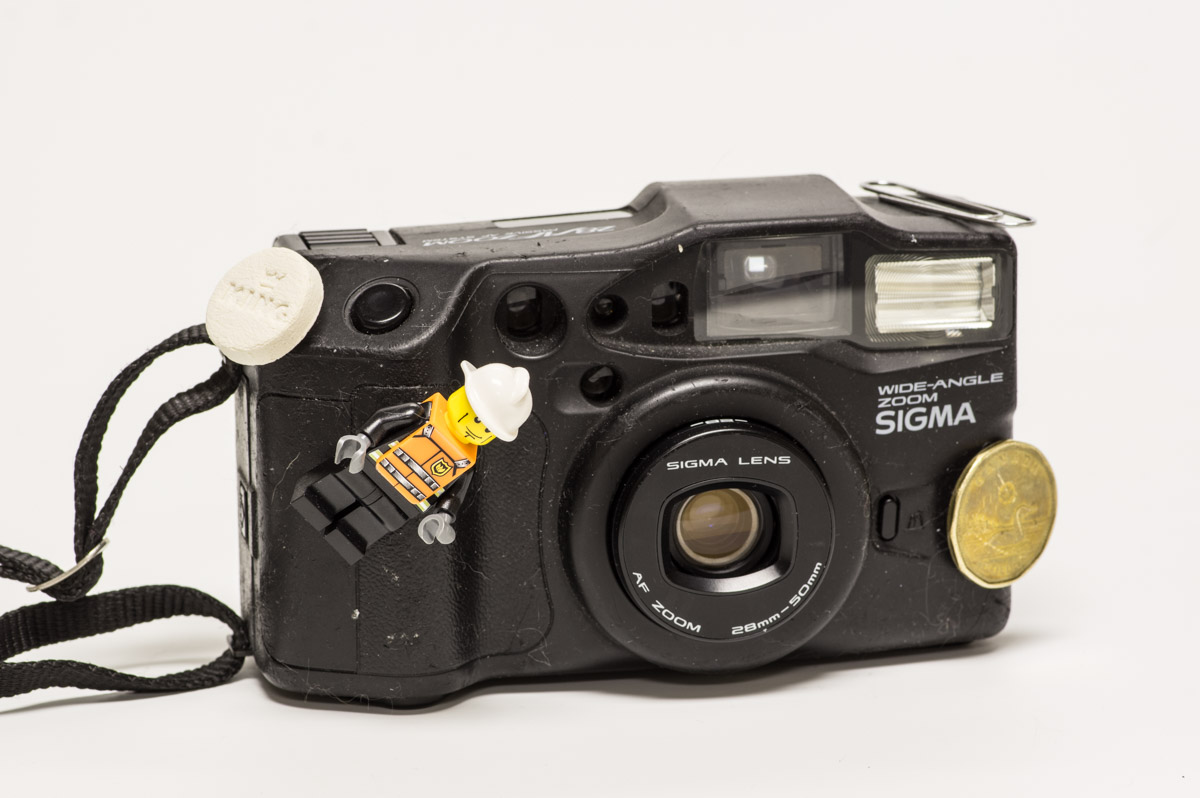
I love this little bit of advertising copy Sigma gave about the 28 AF Zoom and its siblings.
Sigma gives its cameras a touch, exclusive “ZEN” finish which is not only scratch-resistant but is also non-reflective and non-slip. The “ZEN” finish will retain its looks almost forever: your Sigma camera will always look as new even after many years of faithful service.
Every one of these cameras that I have happened across has had a defining attribute, they are sticky. They didn’t start out that way of course but over time whatever that “ZEN” material is it has turned into a gummy mess that will pick up anything loose it comes into contact with. The lens on the AF 28 Zoom goes from 28mm to 50mm or 1.78X which isn’t that impressive, but I do like 28mm. To fill out your focal lengths Sigma also offered the AF Super Zoom 70 that had a 35-70mm lens and the AF Super Zoom 100 with its 50-100mm zoom. That way you could have 3 cameras stuck together.
The Sigma 28AF Zoom lens provides apertures of f4.2-f7 across the zoom range but with a high level of vignetting. Lets face it the camera is as ugly as the images it produces and using it leaves you with a feeling that soap just doesn’t seem to be able to wash away.
One thing about one camera: Despite being an automatic exposure, autofocus point and shoot the Sigma 28 AF Zoom has an external flash shoe that works with almost any flash whether its sticky or not.
no comments | posted in Cameras, Photography, Uncategorized
Feb
26
2017
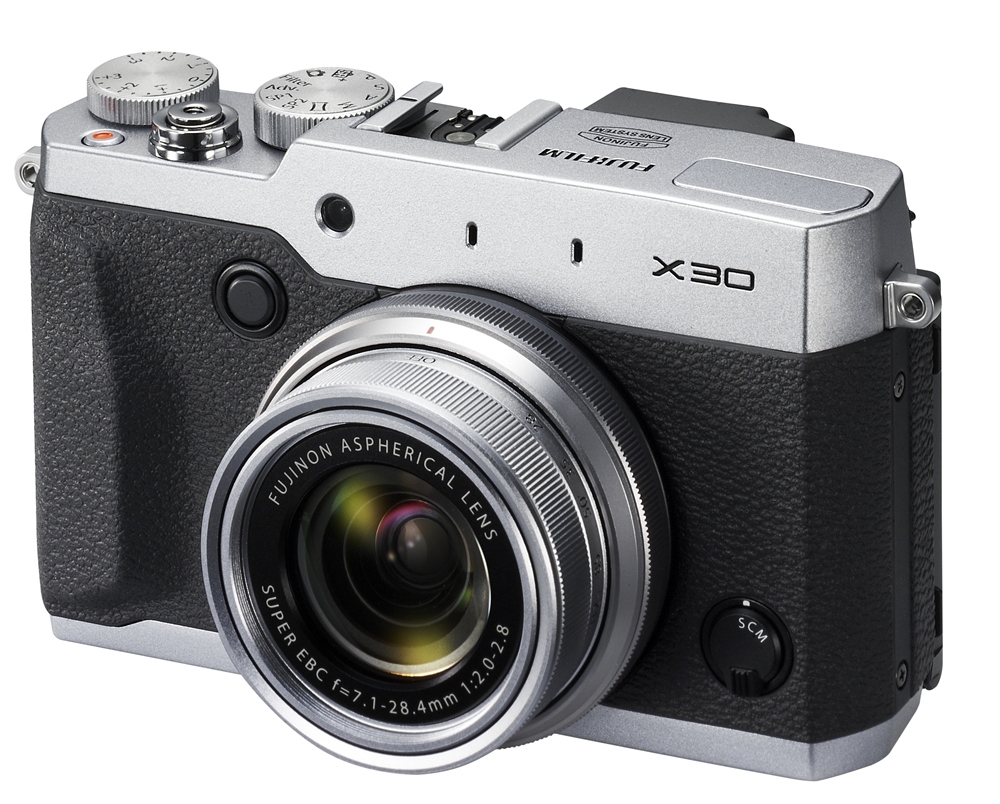
In 2016 I had an opportunity to take a fantastic trip to Paris and London and really wanted a small point and shoot camera that was up to the task. My previous camera that would have fit this bill was the Nikon P7000 but it’s getting old for a digital camera and resets itself every time the battery is removed. As well sensor technology has also improved in the interim primarily in low light. I wont go through all the choices I considered but the Fujifilm X30 was only ever an outside consideration as I was looking at the newly released Panasonic Z100 and the Sony RX100 IV both of which cost more than $1000. By chance however the local camera store (actually a pharmacy and the last camera outlet standing) was having a small camera show with representatives from different manufacturers and dealers. Among these was Fujifilm with some wonderful new cameras and lenses as well as the X30 which was approaching 2 years old and being discontinued. In addition it had the same lens and sensor and processor as the previous model the X20 making the camera seem a little dated. But then there was the price when all was said and done it cost only about 1/3 of the Sony. So aside from the price what other feature would prompt me to forgo buying the best camera I could afford? Well there is the form factor, it’s a nice camera to hold and with all the external dials its easy to use without the need to hunt through menus. 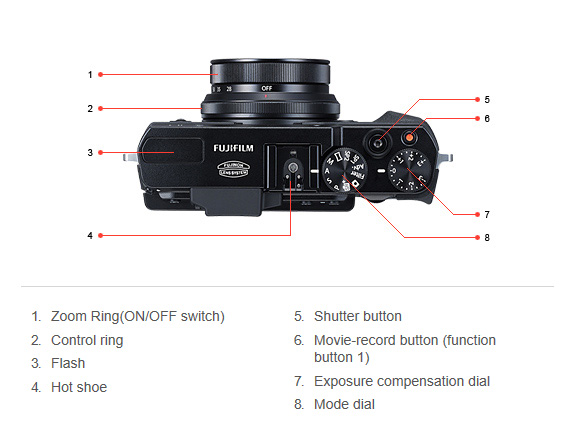 And the 2.360K-dot OLED viewfinder. I’ve never liked EVFs but when I looked through this one I had to admit that it was very good and is a pleasure to use.
And the 2.360K-dot OLED viewfinder. I’ve never liked EVFs but when I looked through this one I had to admit that it was very good and is a pleasure to use. 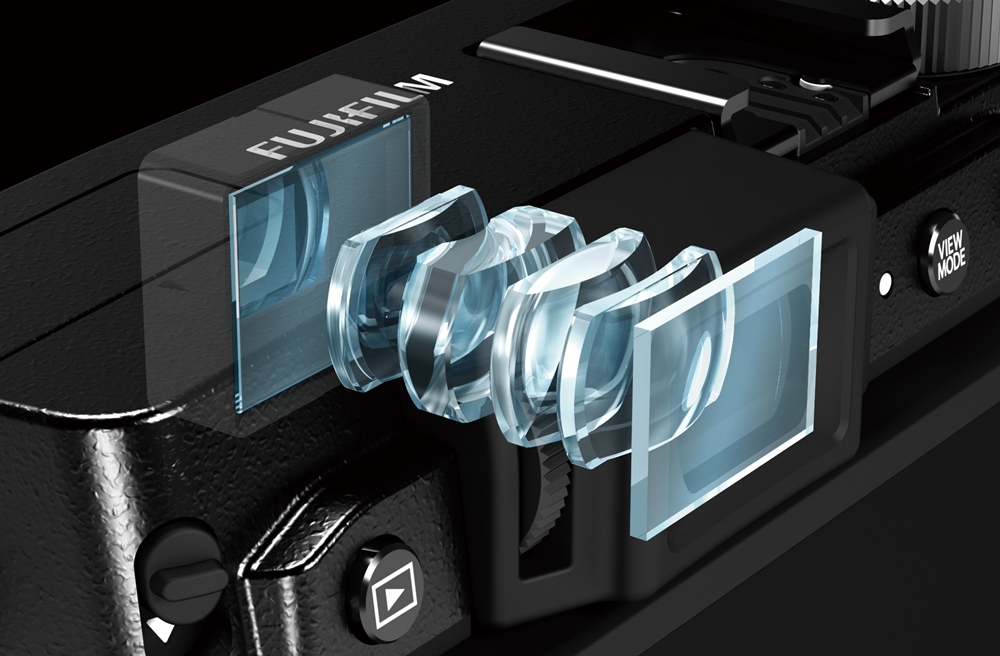 It is large and clear and provides useful information and most importantly for me it did not suffer from lag in low light. In fact Fujifilm claims that the refresh rate is 0.005 of a second. I find that if I pan and the image doesn’t refresh fast enough it causes mild nausea which is not conducive to enjoying photography, one of the main reasons I prefer optical viewfinders. But the X30 viewfinder excels I’m not going to list off the features and specifications of the X30 those are easily found online but rather try to explain where the camera excels and where it does not.
It is large and clear and provides useful information and most importantly for me it did not suffer from lag in low light. In fact Fujifilm claims that the refresh rate is 0.005 of a second. I find that if I pan and the image doesn’t refresh fast enough it causes mild nausea which is not conducive to enjoying photography, one of the main reasons I prefer optical viewfinders. But the X30 viewfinder excels I’m not going to list off the features and specifications of the X30 those are easily found online but rather try to explain where the camera excels and where it does not.
The first thing to be addressed is its ISO range and in particular noise at higher settings. I ran a few tests and as expected it was not a particularly good performer at higher ISO settings. Here is a crop from one test comparing ISO 100 to ISO 800.

So during this testing I determined that ISO 1600 was the upper limit that I was comfortable using to achieve results that I could live with but that limiting it to under ISO 800 was preferable. This is not state of the art territory but it’s also not like you can not take pictures at those values especially given the X30 lenses F2.0-f2.8 maximum aperture.
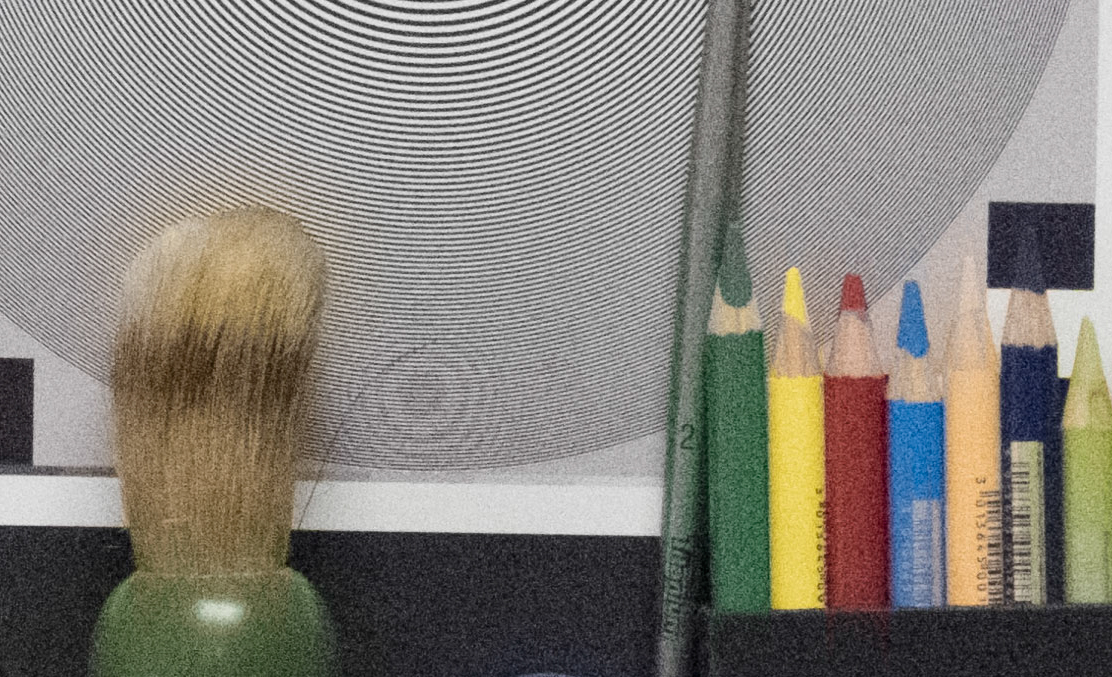
For reference this is what a 100% crop at 3200 ISO looks like without noise reduction. Not useable for me.
The focal range of the lens 7.1-28.4mm yields an angle of view for its sensor that is equivalent to 28-112mm in 35mm terms. While I like 28mm and use it often it would have been nice to have a somewhat wider lens such as 24mm.
Over the next little while I used the X30 when ever I could in order to see how well it performed. What I found was that it was a well laid out camera with good autofocus that produced nice images, what more can you expect. Well larger files such as 20mpixel rather than 12mpixel would be nice and better low light performance would be good. However if you stay within the boundaries of where the X30 works well it is a good all around point and shoot. The X30 also excels at close focus photography as well allowing images taken as close as 1cm to the lens in ‘Super Macro’ mode.  One other minor issue was the movie record button, I find myself hitting it inadvertently far too often ending up with useless short video clips and sometimes a missed photograph. It wasn’t the only digital camera I took and I tended to only use it when traveling as light as possible such as inside museums, a place where it isn’t the strongest.
One other minor issue was the movie record button, I find myself hitting it inadvertently far too often ending up with useless short video clips and sometimes a missed photograph. It wasn’t the only digital camera I took and I tended to only use it when traveling as light as possible such as inside museums, a place where it isn’t the strongest.
Fuji has discontinued the X30 as I mentioned and the have not signaled that there will be a replacement. Nikon has also decided to stop development of their DL series of compacts before they ever made it to market. The point and shoot camera market is practically dead and even the high end compact market which the X30 sat in is limited with Sony and Panasonic dominating that segment with a few exceptions.
What follows are some images from prior to my trip as I tested the Fuji X30 in an other post I will share some of the images from the trip.
no comments | posted in Cameras, Photography, Uncategorized
Feb
2
2017
I can’t resist a cheap camera and a cheap camera with film in it is even better. It isn’t unusual to find disposable cameras in a bin at thrift store often for $1 to $2. The results are unpredictable but it is film so what else are you going to do.
One of those what else can you do is to recover the film for use in another camera. Disposable cameras tend to have the film wound out and as you expose each frame it is pulled into the canister. So if you cover the lens with something opaque or perform this in complete darkness. You can advance the film until it is entirely back into the canister and then break the camera open to recover the film. You then need to pull the film out of the canister 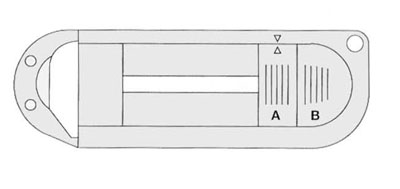
( I use an Arista film leader recovery tool). I did this recently with a disposable camera that said made in China with film made in Italy. I found they had used an old Kodak film canister to wind the film onto and then just put a new label over it.
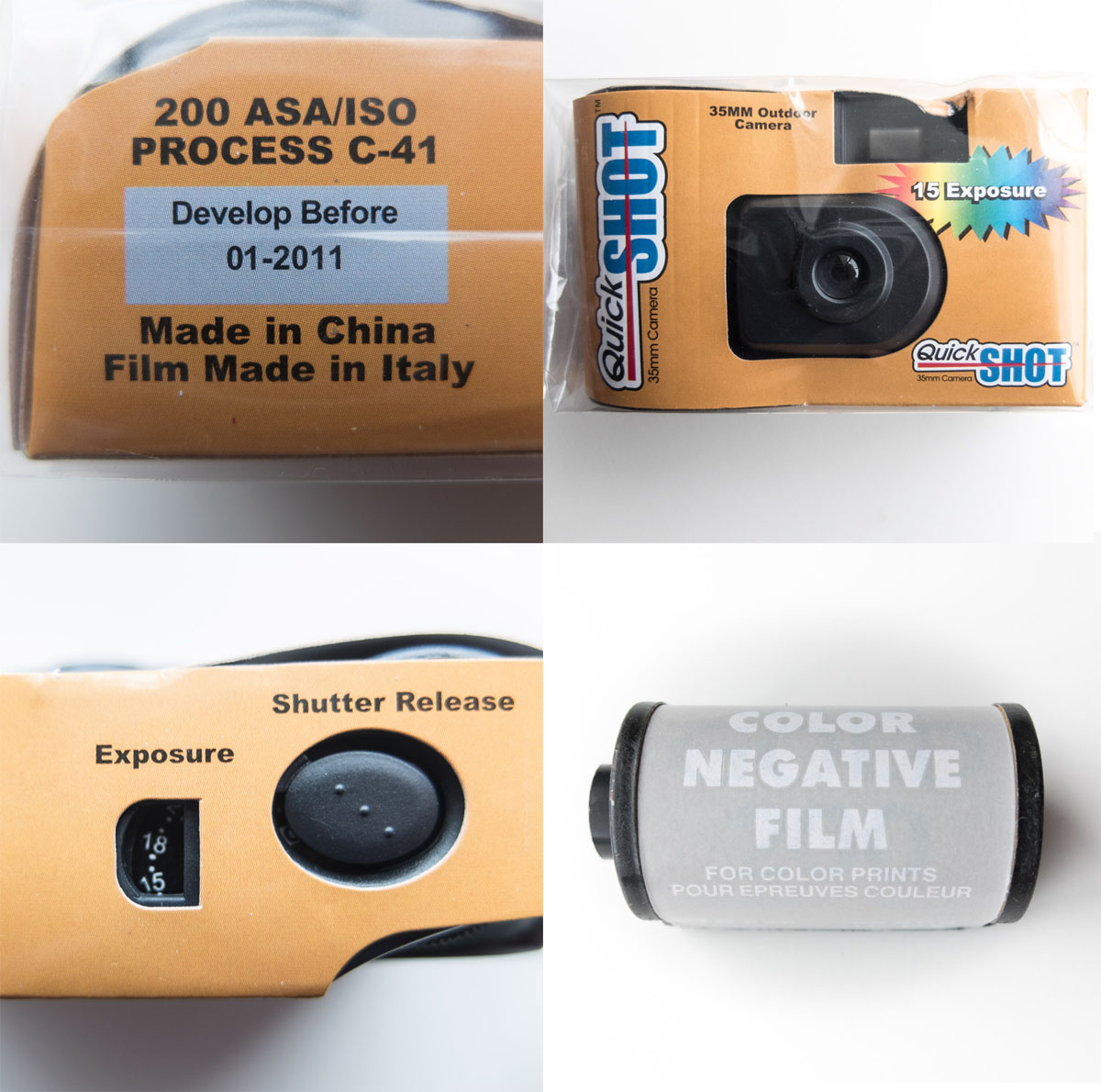
It should be interesting to see how this plays out. However what follows is images shot right in a Fuji disposable camera.
1 comment | posted in Cameras, Photography, Uncategorized















